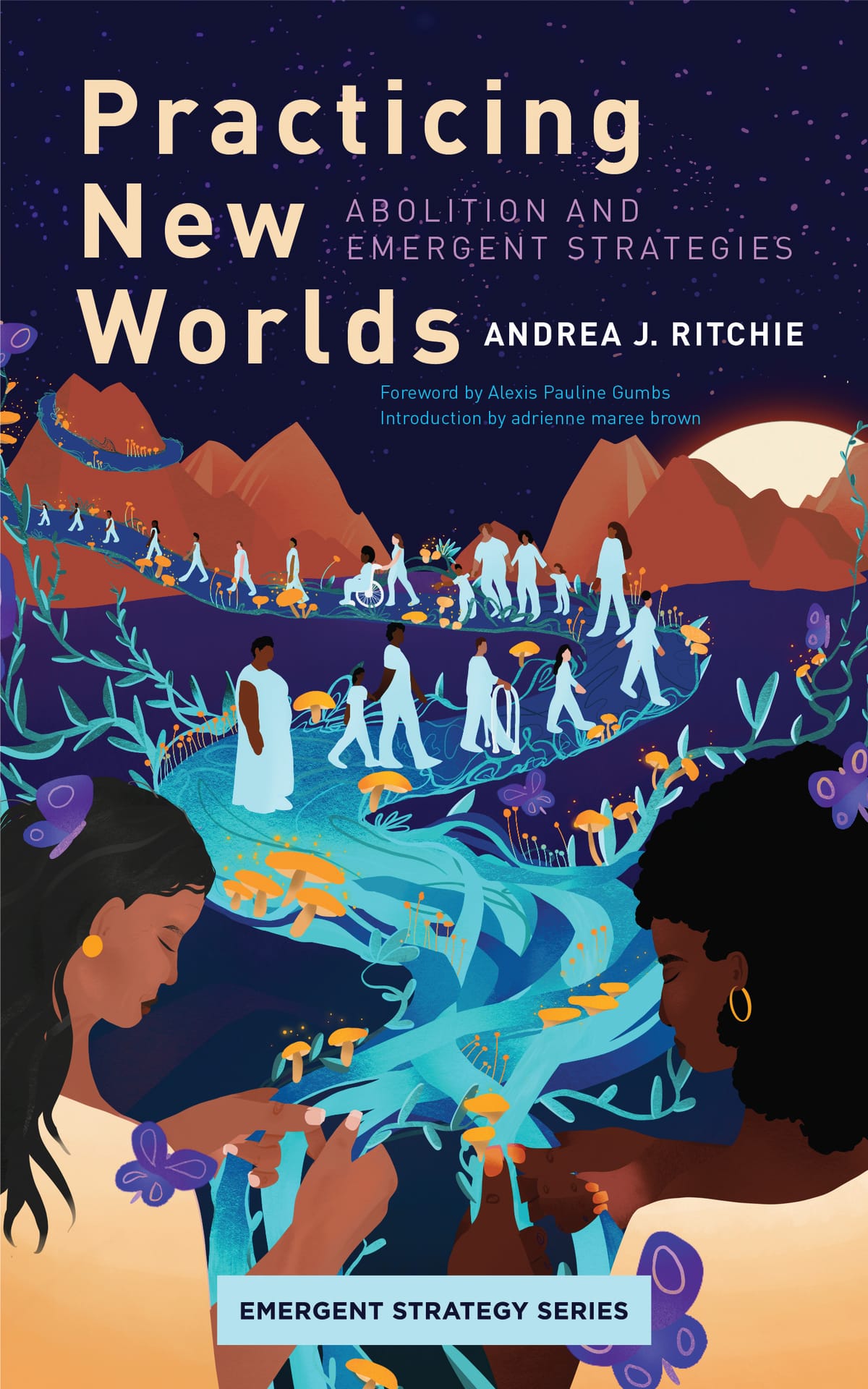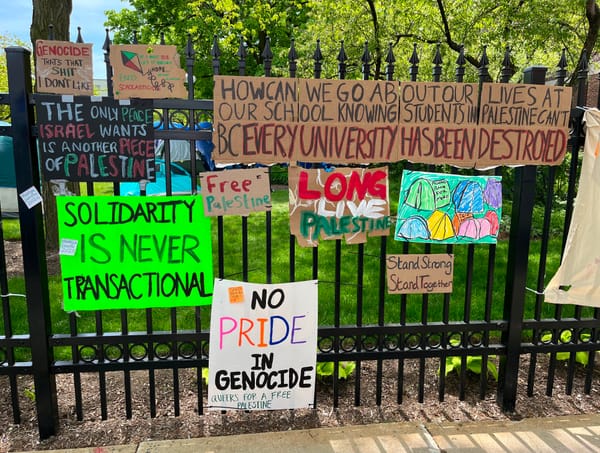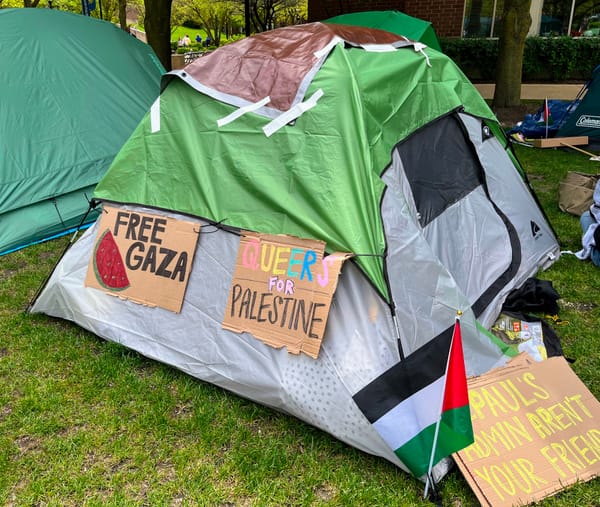"We Need to Resist and Dismantle Through Decentralized Formations"
"Decentralization doesn’t mean an absence of a shared politic, connection, or coordination," writes Andrea J. Ritchie.


The following is an excerpt from Practicing New Worlds: Abolition and Emergent Strategies by Andrea J. Ritchie.
Abolitionist organizing I have been part of or observed has operated in decentralized ways, connected through networks such as Critical Resistance, INCITE!, and Survived and Punished. And, as discussed in the Introduction, increasingly so are Right-wing formations.
Woods Ervin emphasizes that decentralized approaches are essential to abolitionist organizing because the way that the prison industrial complex (PIC) has cohered is in itself decentralized—there isn’t a singular “Department of Carcerality” that we can make our target and abolish. In fact, no such department is required because policing and punishment are so deeply embedded in virtually every institution of society and in our imaginations about what society is and requires. Therefore, our efforts to dismantle the PIC must also include decentralized strategies focused on unraveling this web and extracting ourselves from carceral mindsets, economies, and polities through decentralized action everywhere, simultaneously.
Woods describes this work of abolition as “creating the conditions that make abolition possible. There is not some other magical thing that is the work. I think that’s what emergent strategy principles get at, which is that it’s small structures. I don’t think a focus on creating a giant US Department of Abolition would achieve the goals of the abolitionist project— that’s not actually going to create abolition, especially in the current context.” Instead, we need to build toward abolition by unlearning and unraveling the ways that carcerality is embedded in each of us and our relations, and in the programs and institutions around us. We need to resist and dismantle through decentralized formations, in ways that are specific and appropriate to each of our communities, to each situation and set of conditions, and in a way that can be kept to the scale of relationships and accountability.
Importantly, decentralization doesn’t mean an absence of a shared politic, connection, or coordination—effective decentralized movements are guided by a shared analysis and practice.
Abolitionist principles and calls to action—like the demand to #DefundPolice that emerged onto the national stage in 2020— can provide the rules that shape our decentralized individual and collective actions and enable them to coalesce into formations that can impact structures at a larger scale, provide for our individual and collective needs, and create abolitionist cultures through which we are able to prevent, address, and transform harm.
Decentralized also doesn’t mean disorganized or that everyone has to do everything. Former AMC co-director, organizer, and multimedia artist Diana Nucera, also known as Mother Cyborg, points out the importance of knowing what you bring to the table, honing those skills and competencies, and identifying the specific role(s) you can play based on those assessments. Deepa Iyer’s Social Change Now: A Guide for Reflection and Connection invites readers to explore which role they are best suited to play in the moment: storyteller, guide, healer, disrupter, experimenter, frontline responder, visionary, builder.5 Decentralized movements in Hong Kong have inspired people around the world with carefully coordinated decentralized direct action strategies in which protesters play different roles—holding shields, pointing lasers, setting up tear gas washing stations, acting as lookouts and decoys, participating in “legal” protest activities—with considerable impact.6 Often decentralized movements require elaboration of complex structures to make decentralized decision-making possible, like the spokescouncils and assemblies used during anti-globalization protests, in Occupy encampments, and Global South movements. They also require naming, recognizing, and if necessary, dismantling the informal rules we operate by—whether it’s deference to elders or people with more experience, anti-Blackness, colorism, patriarchy, or the ableist notion that “the people who do the most work should have the most power.”
Abolitionist organizers are increasingly gravitating toward practicing new worlds through decentralized participatory governance in the form of people’s movement assemblies inspired by Global South movements and modeled in the US by Project South’s Southern Movement Assembly. Organized around principles of community governance, organizational self-determination, local leadership, community defense, a multiplicity of strategies, principled dialogue, and rest and regeneration, Southern Movement Assembly is “a multi-racial, multi-issue, multigenerational movement alliance of grassroots organizations across the South that practices democratic governance, coordinates shared actions, and convenes peoples’ movement assemblies of frontline communities to grow bottom-up power and build infrastructure for long-term liberation.”7 The Project South People’s Movement Assembly organizer handbook and framework gathers wisdom from the Jackson People’s Movement Assembly, the 2007 and 2010 US Social Forums, World Social Forums, and a Black Women’s People’s Movement Assembly held in conjunction with the release of criminalized survivor Marissa Alexander, among others, and has been used in the context of the 2020 Uprisings and beyond by organizers from Minneapolis to Nashville.8
Decentralization also doesn’t mean diminished impact— particularly when decentralized movements converge around a set of demands or target. The decentralized 2020 Uprisings have been described as the largest movement in US history—based on the estimated twenty-six million people who protested across the US on a single day in June 2020—unified by a demand to end police violence against Black people, with calls to defund police rapidly replicating across communities through new and existing formations. Despite the backlash, their impacts should not be underestimated; they profoundly shifted the landscape of possibility for abolitionist futures.
Fewer people in the US were aware of massive protests that took place elsewhere in 2020, including those led by Indigenous peoples and farmers across the globe in India, who were challenging laws that corporatized an agricultural sector already rife with inequities so severe that farmers were dying by suicide every seventeen minutes on average. Through decentralized, coordinated collective decision-making among 500 organizations gathered in an unprecedented “alliance of alliances,” hundreds of thousands of farmers traveled and laid siege to the Indian capital of New Delhi. At one point there were over 100,000 sites of protest across India; on one day in November 2020, over 250 million people participated in a general strike in support of the farmers. They blocked roads and railways and set up encampments that would persist—sustained by collective values and practices rooted in Sikh faith, which “fed and clothed thousands of people daily and provided clean water, sanitation and even barber shops and tailors” for a year until the farmers’ demands were met.9 What has been referred to as the single largest protest in human history was not the product of a top-down call to action but emerged through decentralized organizing as dozens then hundreds and then thousands and then millions of people coalesced around a single set of demands.10
Many of us organizing in the 1990s and 2000s were inspired by similarly impactful large, decentralized movements in Central and South America, including the 1994 Zapatista Uprising, the piquetero movement in Argentina, and the landless workers’ movements in Brazil.11 More recently, decentralized but highly effective Chilean Uprisings, mobilizing hundreds of thousands into the streets, forcing a conversations about sexual violence and abortion, and ultimately, a constitutional convention, have captured imaginations.12 While uniquely shaped by time, place, and conditions, what felt significant about each of these movements was the absence of the top-down strategies many of us were familiar with. All of them were decades in the making, rooted in relationships and small decentralized formations that coalesced into action, with profound impacts on larger systems of oppression and resilience to repression.
Footnotes
5. Deepa Iyer, Social Change Now: A Guide for Reflection and Connection (Washington, DC: Thick Press, 2022).
6. William Yang Taipei,“How Hong Kong Protests Are Inspiring Movements Worldwide,” Deutsche Welle, October 21, 2019.
7. For more information on Southern Movement Assemblies, please visit southtosouth.org.
8. Project South, People’s Movement Assembly Organizing Handbook (Atlanta: Southern Movement Assemblies, 2016), see also Jackson People’s Assembly, the US Social Forum, the World Social Forum, the Black Nashville Assembly, and Black Visions, “The Path Forward.” For more information on Marissa Alexander, please see “Marissa Alexander TED Talk,” Survived and Punished, June 1, 2019.
9. Emily Schmall, “How India’s Farmers, Organized and Well-Funded, Faced Down Modi,” New York Times, November 22, 2021.
10. For more information on the Indian farmers’ protests, see Emily Schmall, “How India’s Farmers, Organized and Well-funded, Faced Down Modi;” “Medha Patkar on Farmers Protest, Interview with Medha Patkar, New Delhi 2020,” Media India Group, December 3, 2020, video; “Farmer’s Protest Against Vulgar Inequity in This Country: Medha Patkar,” NDTV, video, November 28, 2020; and Nitish Pahwa, “India Just Had the Biggest Protest in World History,” Slate, December 9, 2020.
11. For more information on decentralized movements in Central and South America, please see Paula X. Rojas, “Are the Cops in Our Heads and Hearts?” in The Revolution Will Not be Funded: Beyond the NonProfit Industrial Complex, ed. INCITE! Women of Color Against Violence (Boston: South End Press, 2009), reprinted at The Scholar and The Feminist Online 13, no. 2 (Spring 2016); Marta Harnecker, A World To Build: New Paths Toward TwentyFirst Century Socialism (New York: Monthly Review Press, 2015); Marina Sitrin, Horizontalism: Voices of Popular Power in Argentina (Oakland: AK Press, 2006); and “What Is the MST?” Friends of the MST, last accessed April 24, 2023.
12. For more information on the movements referenced here, see Kelly Hayes, “Latin American Feminism Has Much to Teach US Left on How to Fight for Abortion,” Movement Memos, podcast, April 7, 2023; and “Reflections on the Chilean Uprising,” The Forge, October 2022.




